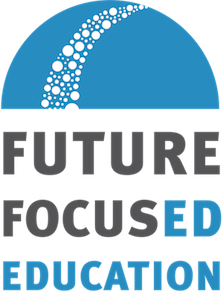It’s Time to Re-Imagine Our Public Schools
By Tony Monfiletto| Executive Director| January 11, 2016
This is a moment in time when we could chart a future that connects our schools to our future prosperity. The Federal ESEA re-authorization, which has now been signed by the President, gives states the freedom to set out their own expectations for their students. The Federal dominance of education policy is shifting back to the states and we could take the initiative to build a consensus about our future. What does our own community think young people should know and be able to do?
In 2015, the State of New Mexico spent $2.8 billion on public school operations and the Albuquerque Public Schools spent $687 million on the same purpose. In addition, APS spent $650 million on buildings, transportation, and other items bringing the total amount to over $1.3 billion. That’s an enormous amount of money that is only tangentially connected to a vision of our future economy.
Simply put, our schools have not adapted to the changing world. They remain rooted in industrial era design from the early 1900s. However, we have examples in our own community of schools that are focused on adaptability, problem solving, and creativity, which will be desperately needed in the future. NextGen Academy, Media Arts Collaborative Charter School, the Leadership High Schools, South Valley Academy, Amy Biehl High School and others are examples in our community that we can build upon.
We are at the front-end of a course correction in public education policy. After billions of dollars and fifteen years of heavy-handed accountability laws, the Federal Government has recognized that education decisions are best made locally. The question is, do we know what to do with this newfound authority? Do we really know what we want from our schools and have we considered how our schools and young people could be transformed from problems to be solved into assets that propel our prosperity?
It is time to expand the circle of people who get to design schools and evaluate them. We should be engaging neuroscientists about brain development, social workers about social and emotional support systems for students, families about their cultures and values, employers about the future economy, and civic leaders about our democracy. What would a school look like if it reflected the wisdom in our own community? Accountability would no longer be something mandated from Washington, Santa Fe, or the Central Office of the Albuquerque Public Schools. Instead, it would be connected to our collective hope for the future.
There are some easy steps that could move the discussion forward. We could re-organize our high schools backward from compelling senior projects that expect students to solve real-life problems through teamwork. We could formally link classes at University of New Mexico or Central New Mexico Community College to high schools to ensure students are on a career path when they graduate. We could create an evaluation system that makes the Common Core come to life by asking students to apply learning to real-life projects that come directly from our community. And those same students would have to prove that they were ready to become adults through public presentations to community experts.
The most important aspect of No Child Left Behind was the focus on equity of outcomes. The law attempted to prevent schools from neglecting the needs of some students by making sure that all were tested and success was based on the achievement of all subgroups (regardless of income, race, ability, etc.) on standardized tests. The focus on equity is essential and we must remember not to commit the sins of the past when we neglected the needs of so many. However, testing is not a complete answer because it does not address the fact that our schools are not designed to meet the future needs of our communities. We cannot fall into the trap of applying yesterday’s solutions to today’s problems.
We can’t afford to have others dictate how to invest $3 billion in education without engaging our own communities in a new conversation about what success looks like for students today and in the future. It is too much money to dedicate to a public school system without a vision for how it can be used to make our city and state a better and more prosperous place to live. If we don’t do it now, New Mexico will be left to someone else’s vision for the future and that vision will undoubtedly be based on our deficits rather than our assets.


